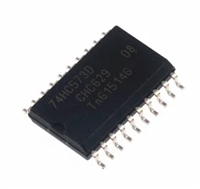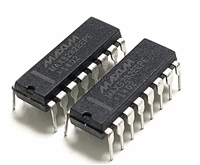ADSP-21061/ADSP-21061L
A 16-bit floating-point storage format is supported, which effec-
tively doubles the amount of data that may be stored on-chip.
Conversion between the 32-bit floating-point and 16-bit float-
ing-point formats is done in a single instruction.
Single-Cycle Fetch of Instruction and Two Operands
The ADSP-21061 features an enhanced Harvard architecture in
which the data memory (DM) bus transfers data and the pro-
gram memory (PM) bus transfers both instructions and data
(Figure 1 on Page 1). With its separate program and data mem-
ory buses and on-chip instruction cache, the processor can
simultaneously fetch two operands and an instruction (from the
cache), all in a single cycle.
While each memory block can store combinations of code and
data, accesses are most efficient when one block stores data,
using the DM bus for transfers, and the other block stores
instructions and data, using the PM bus for transfers. Using the
DM bus and PM bus in this way, with one dedicated to each
memory block, assures single-cycle execution with two data
transfers. In this case, the instruction must be available in the
cache. Single-cycle execution is also maintained when one of the
data operands is transferred to or from off-chip, via the
ADSP-21061’s external port.
Instruction Cache
The ADSP-21061 includes an on-chip instruction cache that
enables three-bus operation for fetching an instruction and two
data values. The cache is selective—only the instructions whose
fetches conflict with PM bus data accesses are cached. This
allows full-speed execution of core, looped operations such as
digital filter multiply-accumulates and FFT butterfly processing.
Off-Chip Memory and Peripherals Interface
The ADSP-21061’s external port provides the processor’s inter-
face to off-chip memory and peripherals. The 4-gigaword off-
chip address space is included in the ADSP-21061’s unified
address space. The separate on-chip buses—for program mem-
ory, data memory, and I/O—are multiplexed at the external port
to create an external system bus with a single 32-bit address bus
and a single 48-bit (or 32-bit) data bus. The on-chip Super Har-
vard Architecture provides three-bus performance, while the
off-chip unified address space gives flexibility to the designer.
Data Address Generators with Hardware Circular Buffers
The ADSP-21061’s two data address generators (DAGs) imple-
ment circular data buffers in hardware. Circular buffers allow
efficient programming of delay lines and other data structures
required in digital signal processing, and are commonly used in
digital filters and Fourier transforms. The two DAGs of the
ADSP-21061 contain sufficient registers to allow the creation of
up to 32 circular buffers (16 primary register sets, 16 secondary).
The DAGs automatically handle address pointer wraparound,
reducing overhead, increasing performance and simplifying
implementation. Circular buffers can start and end at any mem-
ory location.
Addressing of external memory devices is facilitated by on-chip
decoding of high order address lines to generate memory bank
select signals. Separate control lines are also generated for sim-
plified addressing of page-mode DRAM. The ADSP-21061
provides programmable memory wait states and external mem-
ory acknowledge controls to allow interfacing to DRAM and
peripherals with variable access, hold, and disable time
requirements.
Flexible Instruction Set
The 48-bit instruction word accommodates a variety of parallel
operations, for concise programming. For example, the
ADSP-21061 can conditionally execute a multiply, an add, a
subtract, and a branch, all in a single instruction.
Host Processor Interface
The ADSP-21061’s host interface allows easy connection to
standard microprocessor buses, both 16-bit and 32-bit, with lit-
tle additional hardware required. Asynchronous transfers at
speeds up to the full clock rate of the processor are supported.
The host interface is accessed through the ADSP-21061’s exter-
nal port and is memory-mapped into the unified address space.
Two channels of DMA are available for the host interface; code
and data transfers are accomplished with low software
overhead.
MEMORY AND I/O INTERFACE FEATURES
The ADSP-21061 processors add the following architectural
features to the SHARC family core.
Dual-Ported On-Chip Memory
The ADSP-21061 contains one megabit of on-chip SRAM, orga-
nized as two blocks of 0.5M bits each. Each bank has eight 16-bit
columns with 4k 16-bit words per column. Each memory block
is dual-ported for single-cycle, independent accesses by the core
processor and I/O processor or DMA controller. The dual-
ported memory and separate on-chip buses allow two data
transfers from the core and one from I/O, all in a single cycle
(see Figure 4 for the ADSP-21061 memory map).
The host processor requests the ADSP-21061’s external bus
with the host bus request (HBR), host bus grant (HBG), and
ready (REDY) signals. The host can directly read and write the
internal memory of the ADSP-21061, and can access the DMA
channel setup and mailbox registers. Vector interrupt support is
provided for efficient execution of host commands.
On the ADSP-21061, the memory can be configured as a maxi-
mum of 32k words of 32-bit data, 64k words for 16-bit data, 16k
words of 48-bit instructions (and 40-bit data) or combinations
of different word sizes up to 1 megabit. All the memory can be
accessed as 16-bit, 32-bit, or 48-bit.
DMA Controller
The ADSP-21061’s on-chip DMA controller allows zero-
overhead data transfers without processor intervention. The
DMA controller operates independently and invisibly to the
processor core, allowing DMA operations to occur while the
core is simultaneously executing its program instructions.
Rev. D
| Page 4 of 52 | May 2013






 一文带你了解ss8050参数、引脚配置、应用指南
一文带你了解ss8050参数、引脚配置、应用指南

 深入解析AD7606高性能多通道模数转换器:资料手册参数分析
深入解析AD7606高性能多通道模数转换器:资料手册参数分析

 74HC573三态非易失锁存器(Latch)资料手册参数分析
74HC573三态非易失锁存器(Latch)资料手册参数分析

 MAX3232 RS-232电平转换器资料手册参数分析
MAX3232 RS-232电平转换器资料手册参数分析
